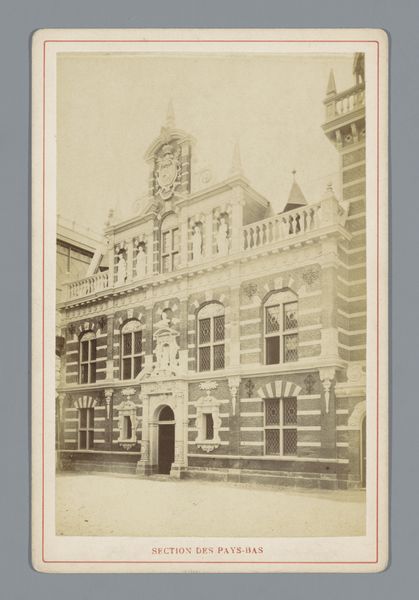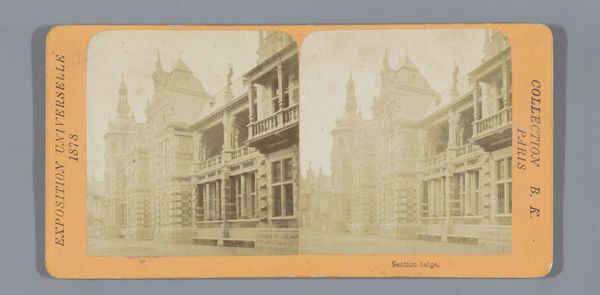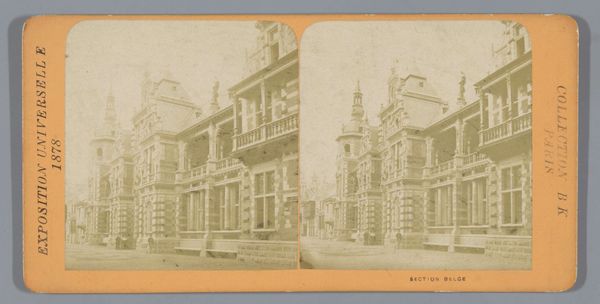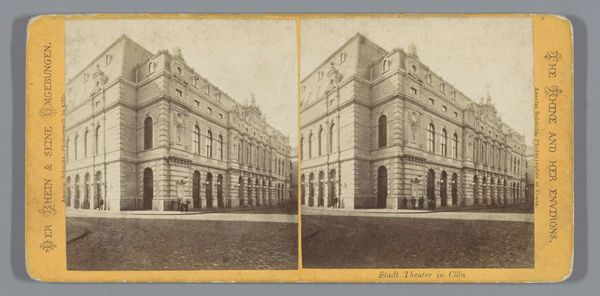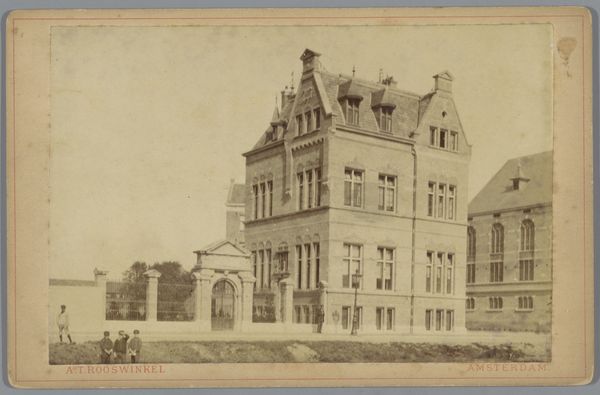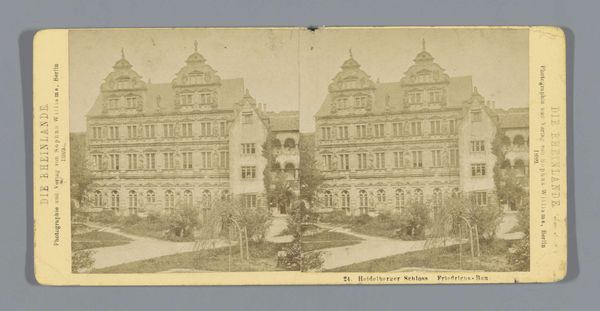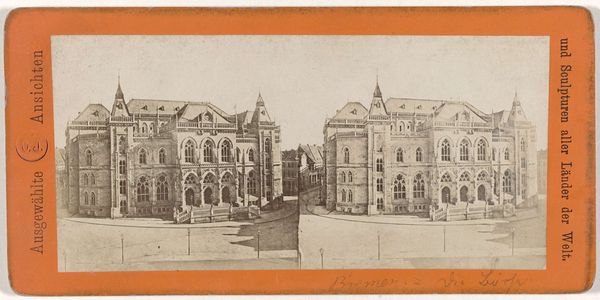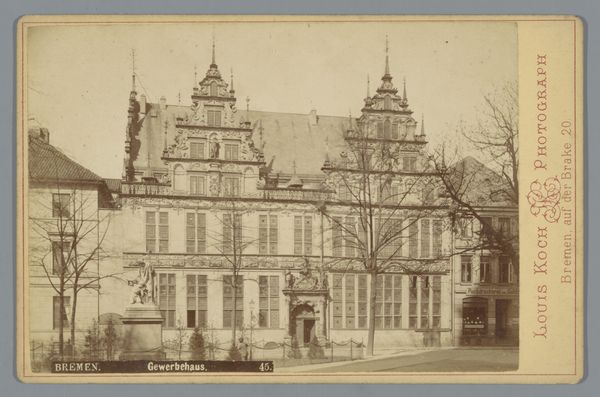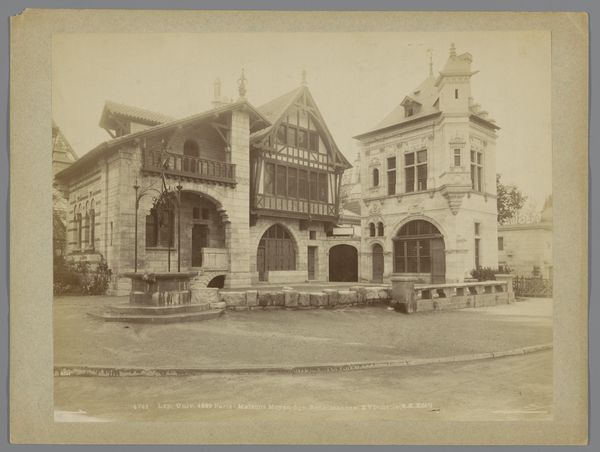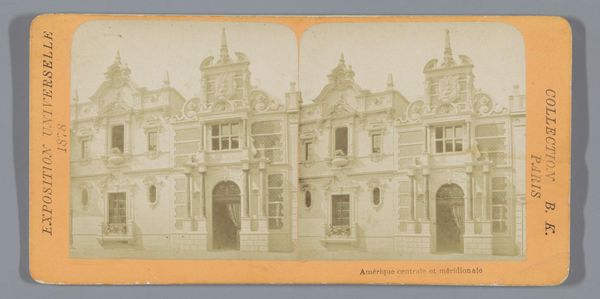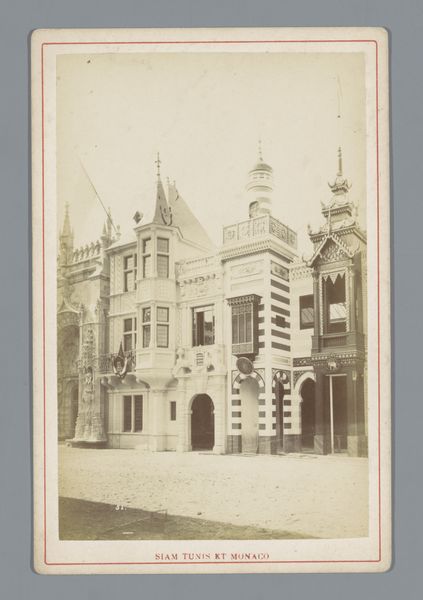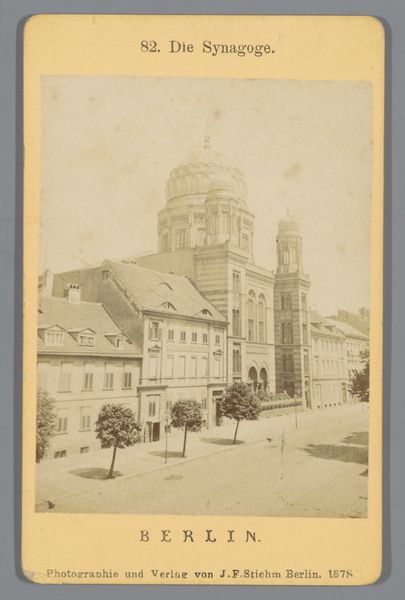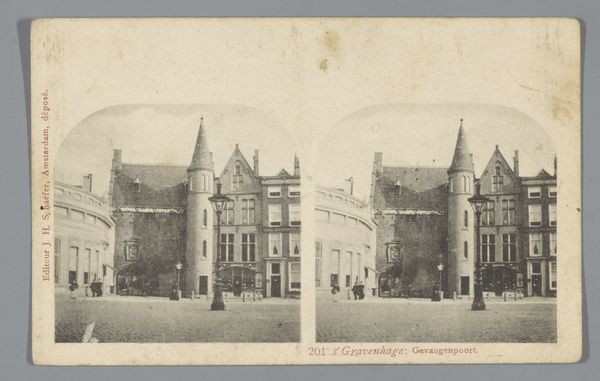
photography, site-specific, gelatin-silver-print, architecture
#
photography
#
coloured pencil
#
site-specific
#
gelatin-silver-print
#
architecture
Dimensions: height 87 mm, width 175 mm
Copyright: Rijks Museum: Open Domain
Adolphe Block captured the Dutch pavilion at the 1878 World’s Fair in Paris using photography, a relatively new medium at the time. The pavilion itself, seen here in a stereoscopic card, was constructed with stone, and decorated with carvings. It's a celebration of Dutch identity, materialized for international consumption. The building evokes established traditions of craftsmanship and architectural design, yet it was produced in an era of mass production. Consider the labor involved in quarrying and shaping the stone, carving the decorative elements, and constructing the building. This was a significant investment, meant to project an image of prosperity and cultural achievement. Photographs like this one offered a way to preserve and disseminate images of the built environment, and to popularize architecture as a form of national branding. The photograph itself becomes a collectible object, commodifying the pavilion. It encapsulates the complex relationship between national identity, material culture, and the rise of consumerism.
Comments
No comments
Be the first to comment and join the conversation on the ultimate creative platform.
